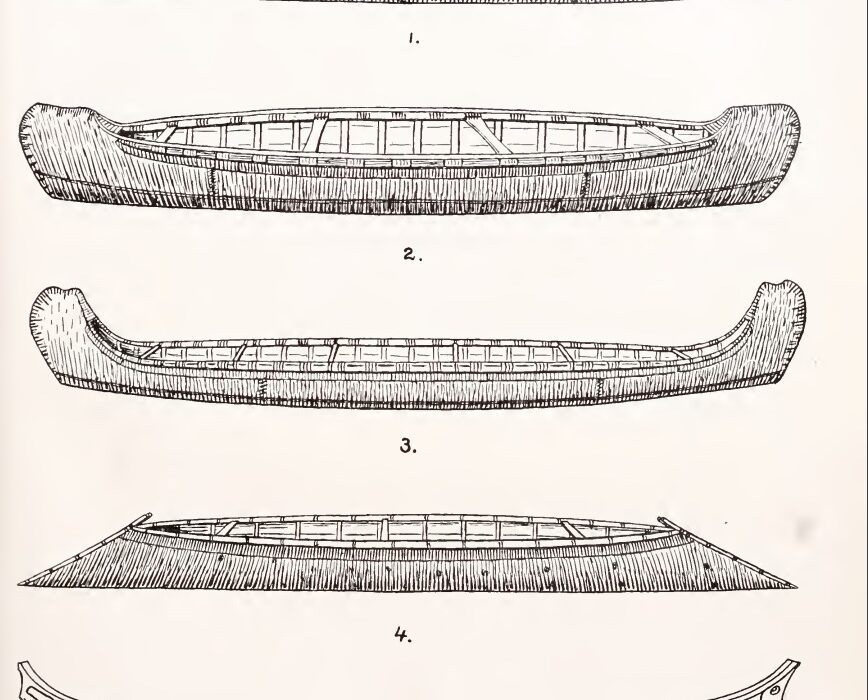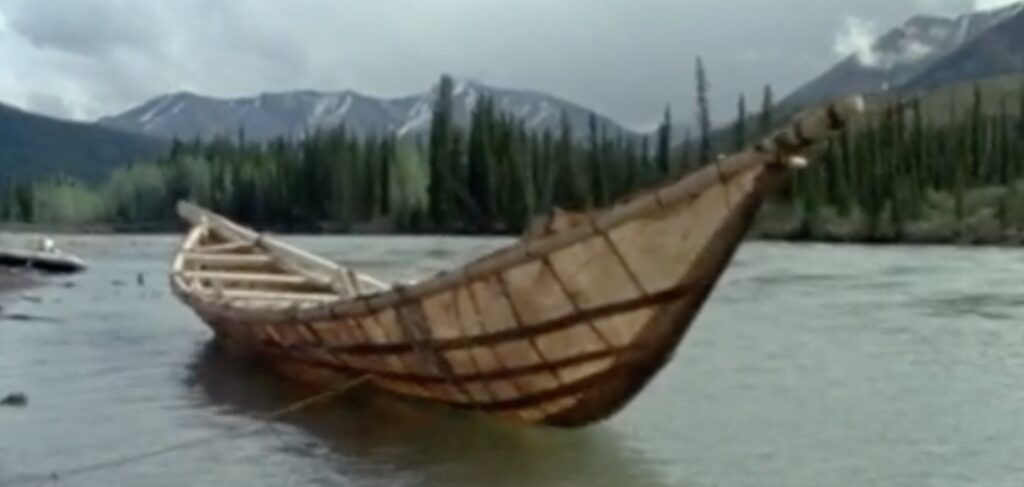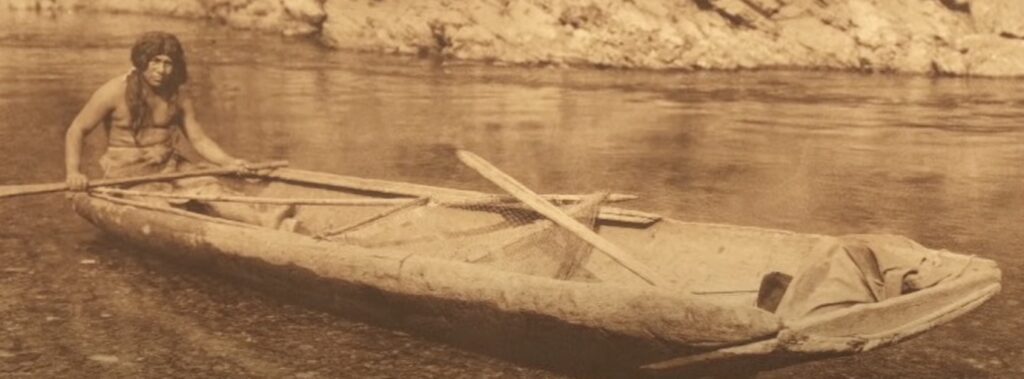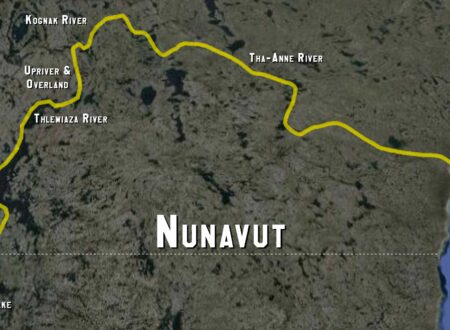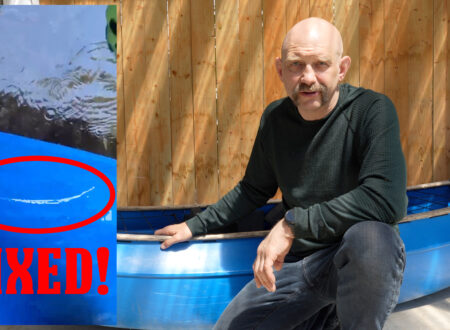Canoes are universal. After all, anywhere that there is open water it’s probably useful to have an open-topped craft that can be easily loaded and unloaded, pointed at both ends so it can go forwards and backwards, and light enough to be propelled by paddles.
Prior to the advent of Kevlar and fancy plastics, canoes were traditionally been built in three ways: bark, skin, or wood. In this article we’re going to look at those three materials and the traditional canoe constructional methods used by native peoples.
1, BARK CANOES
Bark canoes typically combine lightweight treebark with a wooden frame to create a light, manoeuvrable craft. The seams and cracks between sections of bark are typically sealed with some form of resin or gum. Many different trees have been used to build these canoes, so let’s cover some examples of the most common types.
Birchbark Canoes
The birchbark canoe is the archetypal North American bark canoe. These were typically built with large sections of birchbark wrapped around a lightweight wooden. This construction made these boats, light, easy to portage, and easy to repair with local materials if they got damaged.
Alexander Mackenzie, David Thompson, Lewis and Clark, and the voyageurs of the Hudson Bay Company all paddled incredible distances in birchbark canoes, showing the versatility and durability of this style of craft.
The video below shows the construction process of a birchbark canoe, starting by harvesting the birchbark in the spring when the sap is flowing, and ending when the boat is made waterproof with a spruce gum resin.
If you want more footage of birchbark canoe construction, I suggest you check out the César’s Bark Canoe documentary, also available for free at the Canadian National Film Board. In this documentary, a 67-year-old Native man builds a canoe using only birchbark, cedar wood, spruce roots and spruce gum. It’ll have you looking at the forest in a whole different way.
Other Styles of Bark Canoes
Birch was the preferred bark for this style of construction, but It has been reported that spruce, pine, elm and cedar bark were all used where birch trees either weren’t available or too small to usefully harvest.
Outside North America, the Aboriginal people of Australia would build canoes using bark harvested from some species of gum and eucalyptus trees.
In the video below you’ll see how build a makeshift canoe from elm bark. From the looks of it you wouldn’t want to go for a long trip in an elm bark canoe, but you might be very glad you had one to cross a river or a small lake!
2, SKIN CANOES
This canoe style stretches a skin assembled from animal hides sewn together over a wooden frame.
Let’s take a look at some of the most common skin canoes and how they were built…
Moosehide Canoes
Moose are very large animals, and thus mooseskin would have been a logical covering material in areas where birch trees were either rare or too small.
In the first video, Dene elder Gabe Etchinelle builds a mooseskin boat on the shores of the Keele River in the Northwest Territories…
In this second video, a team of people use four moosehides and birch saplings to build a mooseskin canoe in four days using traditional methods…
Sealskin Canoes
The Inuit of Canada, Alaska and Greenland were renowned for their narrow sealskin kayaks, but they also built larger, open-topped boats called umiaks. Kayaks and umiaks are not technically canoes, but the archival video of these skin-on-frame boats is too cool not to share.
First is a documentary filmed in the 1960’s showing how the Netsilik people of the tiny town of Kugaaruk in the Canadian high arctic build a kayak…
And here is a short film in which a much larger umiak is built by the Inuit on King Island, Alaska…
Other Animal Skin Boats
The most common animal skins used in North America were moose and sealskin, but other animals have also been used.
For example, some Alaskan natives are reported to have used walrus skin, Lewis and Clark attempted to build a boat from 32 elk and buffalo hides (but abandoned the project), and bull and horsehide were once stretched over willow frames and covered in tar to build the bowl-shaped coracle found in Wales, Ireland and Scotland, as well as in parts of the Middle East.
3, WOODEN DUGOUT CANOES
A dugout canoe is carved from a single large log, and can range in size from quite small to quite large. Dugout canoes were used in Africa, Asia, Europe and North America, with the oldest surviving canoe, preserved in a peat bog, being about 10,000 years old.
Dugouts can be some of the simplest canoes to build, but also some of the most technically complex.
Red or Yellow Cedar Canoes
The West Coast of North America has gigantic red and yellow cedar trees; for example, the largest known red cedar is 178 feet high and almost 20 feet in diameter. These trees are the perfect source of thick, straight logs that can have been turned into dugout canoes by West Coast native groups like the Haida, Chinook, Coast Salish and many more.
These canoes were often 50 feet long and were very technically complex to build. Felling, splitting, carving, burning, and spreading the canoe into various finished styles with pre-industrial tools represented a very large investment of time and energy.
The 11-part video below takes you through the details of building a red cedar canoe. The builder used mostly traditional methods, but instead of using fire to hollow out the inside of the log, they used a chainsaw. It’s a fascinating documentary nonetheless!
Cottonwood Canoes
Although the biggest dugout canoes were built from red cedar, other tree species were used as well, including the cottonwood which is a large deciduous tree species that typically grows on river floodplains.
In the video below, the builders fell and carve a cottonwood tree, and then use fire to hollow it out into a canoe shape…
Pine Canoes
Here’s an example of a pine log being turned into a smaller dugout canoe using traditional Powhatan methods…
Other Materials
There are accounts of many other tree species being used for dugout canoe construction. In North America these include basswood, balsam, and redwood. Elsewhere in the world there are reports of mahogany, linden, oak, koa and other species being used.
ADDITIONAL RESOURCES
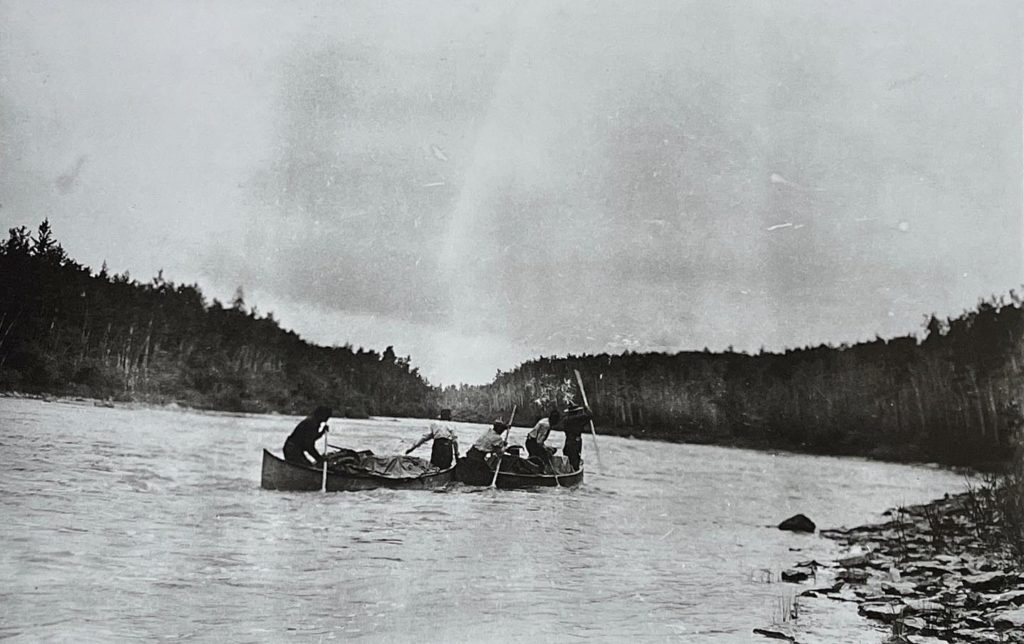
I’ve written extensively about canoeing on this site; click here to check out some of the most popular posts and articles about canoeing.
Or click below to check out other topics covered on Essential Wilderness…
- Bears
- Camping
- Canoeing
- Cycling
- Equipment
- Expeditions
- Featured
- Firemaking
- Food and Cooking
- Hiking and Backpacking
- Interviews
- Outdoor Clothing
- Recipes
- Ropes and Knots
- Training and Conditioning
- Trip Reports
- Wilderness Safety
- Wilderness Skills
Thanks for reading!
Stephan Kesting


